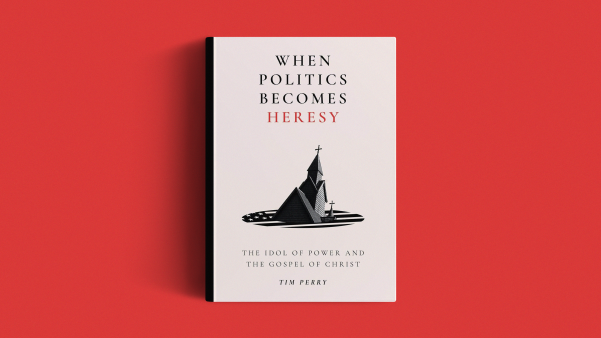Inappropriate payments and academic fudging on behalf of college athletes. Rampant performance-enhancing and recreational drug use. Cursing, furniture-throwing coaches. Medically questionable practice regimens that may have contributed to players’ deaths. The past decade has not been kind to college sports.
Texas’s Baylor University has been pursuing a very public quest to become America’s “Protestant Notre Dame”—a top-ranked research university with an explicit Christian commitment. But recent revelations of drug use and under-the-table scholarship payments in the athletics program, on the heels of a basketball player’s tragic death, are currently distracting everyone’s attention.
Other than the fact that this scandal is occurring at a Christian school, this feels like “old news”—sadly familiar in the big-money world of Division I college sports. But it may lead the faithful to ask a new question: Should a Christian student think twice before getting involved in high-profile college sports like basketball or football? What kind of values will he or she learn in that setting?
During the late nineteenth and early twentieth century, this question would have been unthinkable. Why? Because college sports was imbued with an ideal called “muscular Christianity.”
This was the belief that physical activity and sports, especially team sports, developed character, fostered patriotism, and instilled virtues that would serve their participants—and their participants’ God—well in later life. In other words, team games taught their own high ethic, and that ethic could and should be a Christian one.
1857 serves as a convenient date to mark the origin of muscular Christianity—and of the notion that college sports should be the training ground for youths’ spirits and consciences as well as their bodies. This was the year British author Thomas Hughes published his blockbuster school story, Tom Brown’s Schooldays.
Hughes’s book romanticized the Rugby school (his own alma mater). There, from 1828 to 1842, under the stern but benevolent oversight of the Christian headmaster Dr. Thomas Arnold, the institution of the British public school had been permanently redirected towards the in loco parentis moral training of its charges. Among the most valuable instruments in the moral trainer’s bag of tools were the cricket pitch and the football field.
Though Arnold was much less the sports enthusiast than Hughes made him out to be, the myth of Tom Brown—the high-spirited student learning fair play and moral uprightness by playing manly sports—soon eclipsed the fact of Tom Arnold. Thus was school-sports-as-moral-enterprise born. (A side note: in 1875, a 12-year-old French boy named Pierre de Coubertin read Tom Brown’s Schooldays and began forming the ideals that would animate the Olympic movement.)
The actual term “muscular Christianity” appeared first in an 1857 review of a book by Charles Kingsley, and Thomas Hughes picked it up in the sequel to Tom Brown’s Schooldays, called Tom Brown at Oxford (1860). Hughes wrote in the latter book that the muscular Christian must train his body and discipline his habits so that he would be fit to protect the weak, advance righteous causes, and “subdu[e] the earth which God has given to the children of men.” The name “Tom Brown” itself soon became a shorthand for a social panacea of healthy living, fitness, and presumptively Christian morality.
The ideals of muscular Christianity entered America, and especially American schools, during the Civil War era. At that time recreation and athletics were becoming a fixture in a public education system driven by the ideals of such evangelical reformers as Lyman Beecher and his family. At the nexus of muscular Christianity and college education stood the Young Men’s Christian Association (YMCA).
Now famous mostly as a song by a band with questionable sexual orientation, the YMCA was founded as a Christian outreach that early absorbed the tenets of muscular Christianity: physical and moral health allied, in the Lord’s service. George Williams, the British brain behind the YMCA, was influenced by American revivalist Charles G. Finney. Luther Gulick, the American YMCA’s leading theorist, was a Missionary Kid with a Finneyite background. Both Williams and Gulick were strong proponents of muscular Christianity, and both added to its ideals a commitment to personal conversion.
One of America’s most notable “muscular Christians” was the Victorian-era evangelist D. L. Moody. Bear-like and unflaggingly energetic, Moody cut his evangelistic teeth in a Civil War era Chicago whose YMCA was formed two years after Moody arrived. In 1865 he was elected president of the Chicago branch. The national association tried to elect him president in 1879, but Moody declined. In his speech, he lauded the organization’s “gymnasium, classes, medical lectures, and social receptions” as effective arms in “the work of reaching young men.”
Though he moved away from YMCA work later in his ministry, Moody’s very personality was an advertisement for muscular Christianity. Appreciative students described him as “manly, genuine, and whole-souled.” Even a less-than-appreciative Walt Whitman, in a Sunday Times article, hurled “muscular Christian” at the evangelist as an epithet.
Basketball itself had YMCA origins. The game was invented in 1891 by James Naismith, a gym teacher at the International Training School of the YMCA in Springfield, Massachusetts. Naismith came up with basketball as a way, between the football and baseball seasons, to keep young men involved in healthy activity—and to inculcate in them the Christian values for which the YMCA stood.
Speaking to a convention of the National Collegiate Athletic Association in 1914, Naismith echoed the manly faithfulness of Tom Brown. In his speech, he insisted that college basketball, as well as every other sport, should be put “on such a basis that it will be a factor in the molding of character, as well as … a recreative and competitive sport.”
To be sure, even the apple-pie message of muscular Christianity had its darker side. At the ideal’s pinnacle, and its depth, stood the figure of the British Victorian missionary C. T. Studd.
When Studd was a young man, his millionaire horse-racing father was converted at a Moody crusade. As C.T. later remembered, “Everyone in the house had a dog’s life of it until they were converted” (Studd had two talented young athlete brothers). Studd was known as England’s greatest cricket-player—at both Eton and Cambridge he had outshone even his brothers. For the kind of stardom such prowess earned in the British prep school or university—and even the country as a whole—think of J. K. Rowling’s Harry Potter and the Quidditch cup.
The sports hero soon caused a sensation when, along with six other brilliant, manly students, dubbed the “Cambridge Seven,” he left for China and a lifetime of missionary service. His missions career, during which he gave away nearly half a million dollars of inheritance money, led him from China to India to the deeps of the African Congo.
While transferring his ethic of heroic sacrifice and self- discipline from sport to mission gained Studd plaudits at home, it made him downright miserable to work with in the field. As Ruth Tucker puts it in her account, “Even Studd’s daughters and sons-in-law found him to be a most difficult individual to work with. He had sacrificed everything for Africa, and he expected his missionaries to do the same. He worked eighteen-hour days, and, according to [his son-in-law] Norman Grubb, ‘There was no let-up … no diversions, no days off, no recreation.'”
This leave-it-all-on-the-field work ethic drove Studd to extremes. After years of work in his Congolese “Heart of Africa mission,” C. T. wrote a booklet entitled “D. C. D.” In it he cried out, “I want to be one of those who doesn’t care a damn except to give my life for Jesus and souls.”
That shocking phrase, initialized in the booklet’s title, offended many of even his strongest supporters. It also represented an intensity of commitment that soon took a dramatic physical toll: after a long struggle with a variety of illnesses made worse by his brutal self-imposed schedule, Studd became addicted to morphine tablets—the only way he could keep himself going—and had to be removed from the mission (by then called the Worldwide Evangelization Crusade [WEC]).
Today, however, the dark side of what might be called the “athletic ethic” has little to do with an excess of evangelistic zeal, and everything to do with the usual muck of life in a country too rich and self-indulgent for its own good. Perhaps the memory of the original ideals will spark some modern reformer to usher school athletics, as a prodigal son, back into the presence of its Father.
*Thanks to Christian History editorial resident Collin Hansen for research used in this article.
*For a careful, revealing portrait of how muscular Christianity grew and changed as America developed it from its British roots, see Muscular Christianity (Baker: 1999), by Wheaton professors Tony Ladd and James A. Mathisen. I owe several points in this article to Ladd and Mathisen.
Copyright © 2003 Christianity Today. Click for reprint information.








